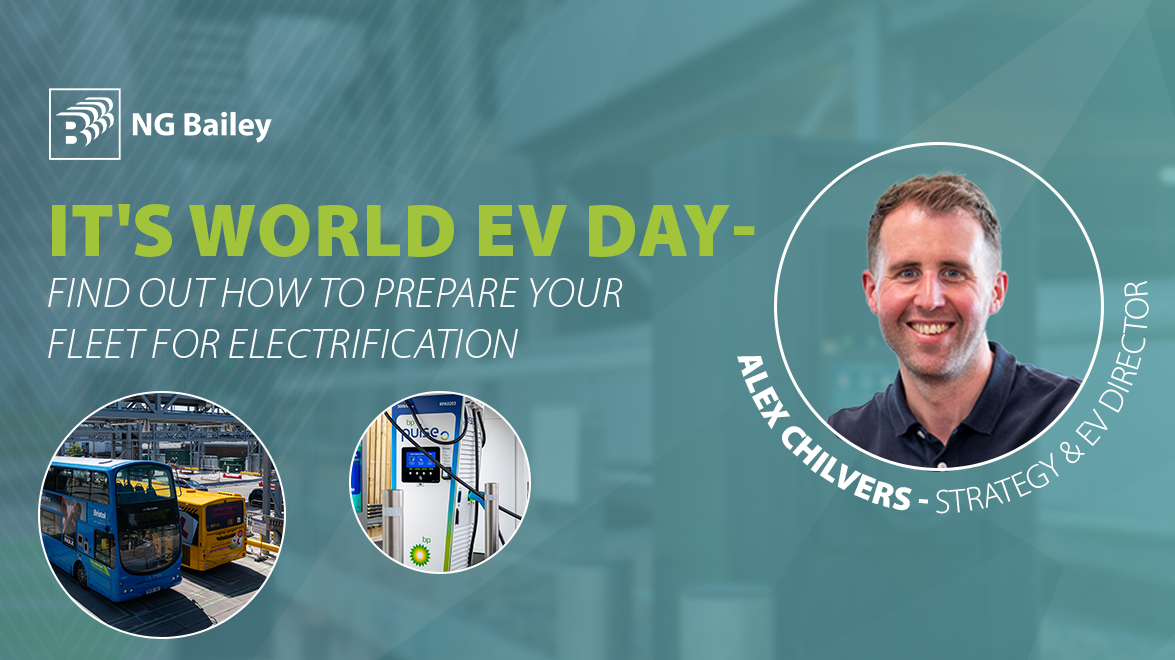9 hrs
How to prepare your fleet for electrification

Alex Chilvers, Strategy and EV Director at NG Bailey, shares expert insight to help organisations lay the groundwork for successful fleet electrification. This feature first appeared in Fleet News on 4 September 2025.
As the UK moves steadily toward its net zero goals, the shift to electric fleets is becoming a strategic priority for many businesses. While the transition comes with its challenges, it doesn’t have to be daunting. With the right preparation, organisations can take confident steps toward electrification, unlocking long term benefits for their operations and the environment.
From understanding your fleet and driver behaviours to building internal momentum and fostering collaboration across teams, these practical steps will help decision makers future proof their strategy and take meaningful action.
Understanding your fleet
Before investing in electrification, it’s important to understand how your fleet operates, not to restrict your options, but to unlock the most effective path forward. Assessing vehicle types, journey patterns, and driver habits such as whether vehicles are taken home and if home charging is available, will help tailor your strategy to the real requirements of your fleet.
Telematics data, already available in many fleets, is a powerful asset here. It provides accurate insights into mileage, routes, and usage patterns, helping fleet managers make informed decisions. With this data, organisations can confidently identify which vehicles are ready for electrification now, ensuring you’re well on your way to meeting your EV targets.
Quick wins to build momentum
Electrifying your fleet doesn’t have to be an all or nothing leap. In fact, starting with the vehicles that are easiest to transition can be a smart way to build momentum and demonstrate early success.
Focus first on short-range vehicles with predictable routes or those that return to a central depot, as these are often the most straightforward to electrify. Then, look at aligning EV adoption with your existing vehicle renewal cycles. This allows you to make progress without disrupting operations or overhauling your entire fleet at once, which can be unnecessarily costly. Furthermore, electrifying your fleet gradually allows your teams to get used to managing EV vehicles.
And don’t underestimate the power of driver appeal. Many drivers appreciate the smoother ride and modern features of EVs which often include screens, instant torque and various driving modes, which can help build internal support and enthusiasm for the transition.
Even small-scale rollouts can benefit from future-ready thinking. Modular infrastructure and open standards like OCPP 2.1 allow you to scale up easily as your needs evolve. OCPP 2.1 enables smart diagnostics, remote monitoring, and dynamic load balancing, giving you flexibility and control from day one.
Collaboration
Fleet electrification is a chance to bring teams together around a shared goal. It’s no longer just a fleet manager’s project; it’s a strategic initiative that benefits from cross departmental input.
Facilities and property teams can help ensure charging infrastructure is installed in the right places and integrated smoothly with existing systems. Sustainability teams can bring the bigger picture, aligning fleet changes with carbon reduction targets, and HR can support drivers with training and policies that make the transition seamless and inclusive.
Externally, collaboration can unlock even greater value. Businesses operating in commercial hubs may benefit from infrastructure sharing, opening their charging sites to other organisations, or using others. This approach not only spreads costs but also strengthens local networks and accelerates adoption.
Industry groups, including HGV and bus operators are already working together to make shared infrastructure viable, with targets to keep energy costs between 30–40p/kWh. Utilising an infrastructure sharing system is great for travelling fleets, who may need to charge whilst on their journeys, hence adding to the local and national network.
Planning permission may be required for expanded infrastructure, so early engagement with local authorities is essential, not just to avoid delays, but to unlock opportunities for smarter, more integrated solutions. With the right partnerships and a collaborative mindset, electrification becomes more than a compliance exercise and could lead to better partnerships.
Conclusion
Fleet electrification is a powerful opportunity for organisations to modernise operations, reduce emissions, and contribute meaningfully to the UK’s net zero ambitions. With a clear understanding of your fleet, a phased approach to rollout, and strong collaboration across teams, the transition becomes a practical step toward smarter, cleaner mobility.
By investing in scalable infrastructure and embracing smart technologies, businesses can build a future ready fleet that delivers long-term value.

























